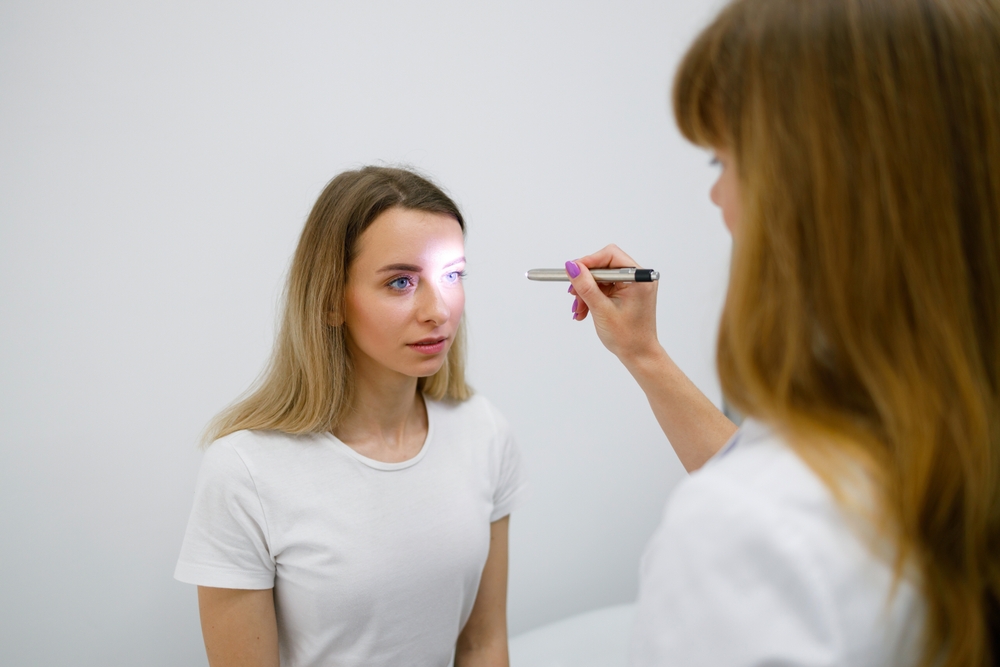
While eye exams entail being personal and up close with the eyes, this vulnerability ensures you identify problems early to start treatment. Hence, it is ideal to schedule a comprehensive eye exam. Read on to learn what to expect.
Health History
Your eye specialist will first get your complete medical or health history. It is always a good idea to note down the medications you are currently taking, the dosages, and the time you take them before your appointment. Your optometrist or ophthalmologist will also ask about your family history. At our office, we send you the health history and medical history forms to fill out online before you arrive at our office saving you time during your office visit.
Visual Acuity Test
Your eye doctor will have an optical technician test your visual acuity by asking you to read a chart with letters from various distances.
Color Blindness Test
Your eye doctor will have to establish if you are color blind or not. The test looks like colorful dots of the same shade or color, making a circle. There will be an image of different colored dots inside. You can see colors well if you can identify the image; if you cannot, you are color blind.
Depth Perception
You will wear a pair of 3D glasses and get a book with different patterns with circles. You will have to determine which ones are close to you.
Eye Movement
Your eye movement will be checked during the initial phase of your eye examination. You will be asked to hold your head still as you follow an object in motion. You may develop reading ability problems or strain later in life if your eyes do not move smoothly.
Eye Alignment
Your eye doctor will check how well your eyes work together and their alignment. One way they do this is by using a cover test. They will have you focus on a point as you have one eye covered. They will examine how your eyes fixate as they move the cover from one eye to the next. A more accurate assessment can now be done with a newer technology called the Neurolens. The testing instrument can detect misalignment of the eye down to 0.1 prism diopter. This higher degree of precision allows us to more accurately detect eye misalignment that can be associated with headaches, stiff or painful neck symptoms, tired eyes, computer related discomfort, dry eye discomfort, light sensitivity and even car/motion sickness or dizziness.
Eye Wellness Scans and Photos
We offer each patient an opportunity to have special retinal testing done at a screening price to evaluate the inside of the eye looking for macular degeneration, glaucoma, diabetic retinopathy and other eye diseases. These images allow the doctor to not only look at the retina from a ‘birds eye view’, but to also evaluate the inner layers of the retina making it possible to detect eye diseases at an earlier stage.
Glaucoma Test
In our office, the optical technician will use an instrument called the iCare tonometer which will gently touch your eye to determine the pressure inside your eye. The iCare Tonometer is kinder and gentler than the “air puff” test reducing the anxiety typically associated with puffing air in the eye. It’s so gentle, most people don’t even notice it although a few will comment about how they feel they need to blink. Most people prefer this method and thank us for this thoughtful difference in exam experience.
Prescription Testing
Testing your prescription will help if you need a change or new glasses. It also helps if you need contact lens fitting. This is called an autorefractor and gives the doctor a preliminary prescription to start with prior to the refraction.
Refraction
A refraction test helps narrow down your exact prescription strength. You will have an instrument that looks like enormous metal eyeglasses placed in front of you to view through. While seated in front of it, your eye specialist will help you focus on letters like those in the visual acuity test as they flip lenses back and forth through different prescription strengths until they identify the right one for you.
Slit Lamp Test
A sit lamp test will allow your doctor to look at the inner parts of your eye through a microscope with intense magnification. It helps check for corneal ulcers, macular degeneration, diabetic retinopathy, and cataracts.
Pupil Dilation
Dilating your pupils is vital to help your eye doctor perform some tests. They will put some eye drops into your eyes to enlarge your pupils.
Binocular Indirect Ophthalmology (BIO)
Your eye doctor will use a headlamp and a handheld lens to look through your enlarged pupil to obtain a 360 degree view of the internal structure of each eye. This allows a more thorough assessment of your eyes’ health.
For more about comprehensive eye exams, call Paradise Canyon Eye Care at our St. George, Utah office. Call (435) 334-2331 or (435) 656-2003.







